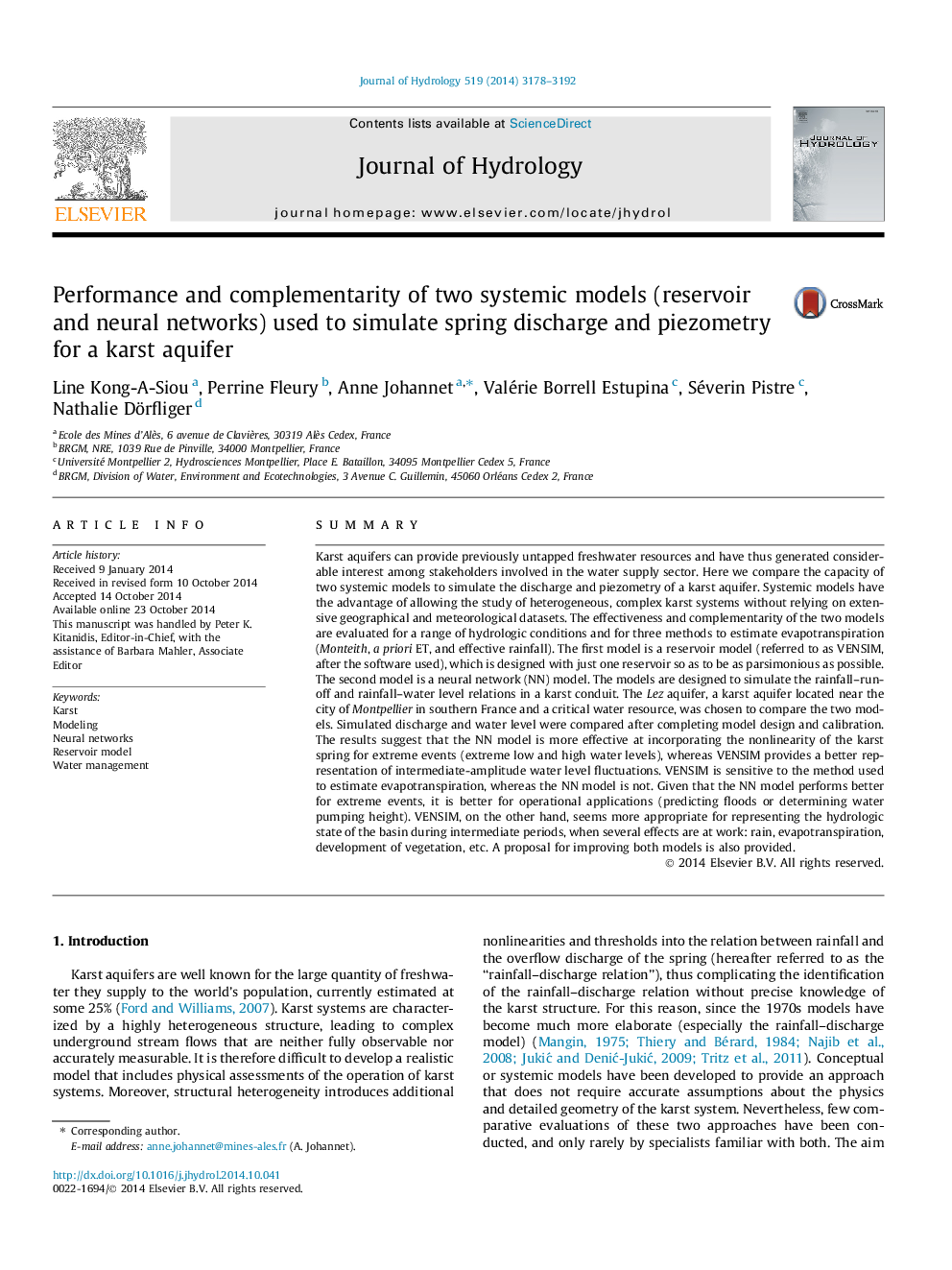| کد مقاله | کد نشریه | سال انتشار | مقاله انگلیسی | نسخه تمام متن |
|---|---|---|---|---|
| 6412208 | 1332897 | 2014 | 15 صفحه PDF | دانلود رایگان |
- Reservoir and ANN models are able to effectively simulate karst aquifer conditions.
- Neural networks models are insensitive to the type of applied evapotranspiration.
- Neural networks and reservoir models serve as complementary techniques.
SummaryKarst aquifers can provide previously untapped freshwater resources and have thus generated considerable interest among stakeholders involved in the water supply sector. Here we compare the capacity of two systemic models to simulate the discharge and piezometry of a karst aquifer. Systemic models have the advantage of allowing the study of heterogeneous, complex karst systems without relying on extensive geographical and meteorological datasets. The effectiveness and complementarity of the two models are evaluated for a range of hydrologic conditions and for three methods to estimate evapotranspiration (Monteith, a priori ET, and effective rainfall). The first model is a reservoir model (referred to as VENSIM, after the software used), which is designed with just one reservoir so as to be as parsimonious as possible. The second model is a neural network (NN) model. The models are designed to simulate the rainfall-runoff and rainfall-water level relations in a karst conduit. The Lez aquifer, a karst aquifer located near the city of Montpellier in southern France and a critical water resource, was chosen to compare the two models. Simulated discharge and water level were compared after completing model design and calibration. The results suggest that the NN model is more effective at incorporating the nonlinearity of the karst spring for extreme events (extreme low and high water levels), whereas VENSIM provides a better representation of intermediate-amplitude water level fluctuations. VENSIM is sensitive to the method used to estimate evapotranspiration, whereas the NN model is not. Given that the NN model performs better for extreme events, it is better for operational applications (predicting floods or determining water pumping height). VENSIM, on the other hand, seems more appropriate for representing the hydrologic state of the basin during intermediate periods, when several effects are at work: rain, evapotranspiration, development of vegetation, etc. A proposal for improving both models is also provided.
Journal: Journal of Hydrology - Volume 519, Part D, 27 November 2014, Pages 3178-3192
